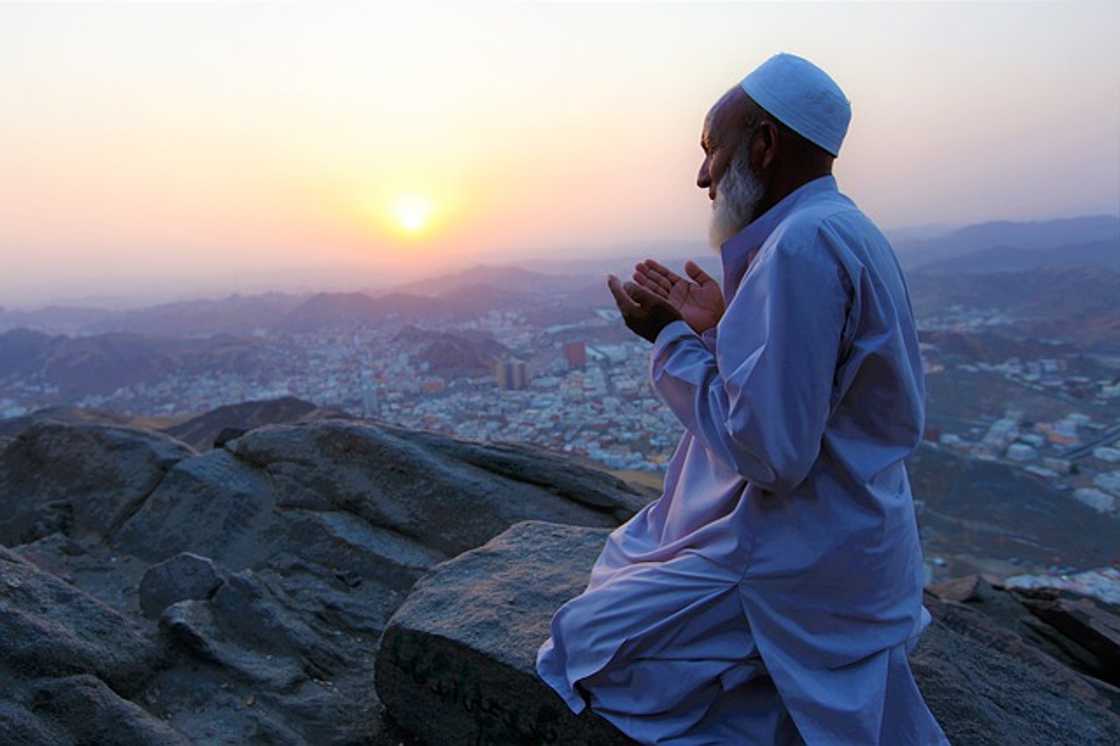How to pray in Islam (perform a Salah) for the beginners
There are five pillars in Islam, and prayer is among them. At the age of ten, a Muslim child must have learned how to pray in Islam because they can differentiate between good and bad things. Five times of prayers at different moments daily should be completed to cleanse oneself.

Source: UGC
According to Islam, prayer must be offered to gain courage in life. Apart from that, Allah generally speaks through the holy Quran, and the only way to respond to him is by praying. They also believe that the Islamic prayer is imperative because God has told them to do this, and by obeying this instruction, there are lots of benefits.
How to perform Wudu
Before a Muslim offers prayers to Allah, there are specific protocols that must be followed. The first is cleansing oneself by Wudu, a ritual cleansing, before proceeding to perform Salah. This is essential because a person must have a clean body, a place of prayer, and their cloth must be free from impurities before offering prayers to Allah.
To begin the process, a person offering prayers:
- Says Bismillah
- Washes their hands up to the wrists thrice thoroughly
- Rinses the mouth thrice, swirling the water around and rinsing the nose thrice while blowing the water out with the left hand
- Makes their intention known that they are performing the fard (obligatory) actions of wudu
- Washes their face thrice from the hairline to the chin and from ear to ear while ensuring that the face, eyebrows, under the nose and lips are washed
- Washes the arms and hands from the fingertips up to the elbows thrice
- Wipes the head, starting with the hands at the front of the head and bringing them to the back of the head and back to the front again
- Wipes the ears by putting the index fingers in the earlobes and wiping the back with the thumbs
- Washes the feet thrice up to the ankles while ensuring that in between the toes are wiped with the little finger
- Finishes the process with the dua
The recommended clothing for males must cover their naval to the knees and preferably cover the shoulders. Any clothing covering the body, including their head, toes, and a portion of the feet's front, is appropriate for the females. However, the clothing does not necessarily have to cover their hands and face.
How to perform a Salat
Once the ritual cleansing is done, the following are steps to follow for a beginner who does not know how to pray namaz:
1. Stand uprightly and face the direction of Al-Ka'bah. In Arabic, this position is called Qiyaam, while the direction is called Qiblah
2. There should be an intention (Niyyah) or purpose for which the prayer is offered
3. Next is to raise the hands to the ears while saying Allahu Akbar, which means Allah is the Greatest. The process is called Takbiratul Ihram.

Source: UGC
4. After that, the right hand is placed on top of the chest's left hand. Looking down to the place where the forehead will touch the ground in the Sujood (prostration), namaz will be recited. However, for a beginner who does not know how to read namaz, this recitation is the interpretation:
O Allah, how perfect You are, and praise be to You. Blessed is Your name, and exalted is Your majesty. There is no god but You. I seek shelter in Allah from the rejected Satan. In the name of Allah, the Most Gracious, the Most Merciful.
5. Suratul Fatihah will be recited next, which is below:
All praises and thanks be to Allah, the Lord of the worlds, the Most Gracious, the Most Merciful; Master of the Day of Judgment. You alone we worship; from You alone we seek help. Guide us along the straight path - the path of those whom You favoured, not of those who earned Your anger or went astray.
6. Any other portion of the Holy Qu'ran will also be recited before bowing down and reciting some words.
7. After standing from the bowing position, the person praying prostrates on the floor with the forehead, nose, palms of both hands, knees, and toes touching the floor.
8. Once the necessary recitation is completed, the person sits up from the floor while saying, "Allahu Akbar." The person offering the prayer sits upright with knees bent and palms placed on them before saying, "Rabbighfir li."
After this round, the person stands up for the second Rak'ah and repeats the process. The exception is that Subhanaka will not be recited at the beginning, and after the second Sujood (prostration), they sit on the left leg while the right foot remains in an upright position.
More so, the right hand will be on the right thigh with all fingers together in a fist apart from the index finger. The index finger is stuck out straight, with the left hand on the left thigh before reciting Tashahhud silently.
How to pray to God
Muslims do not just pray without preparing; they have a specific time that all Muslims worldwide pray. Salat, for instance, is the obligatory Muslim prayers performed five times each day. It is the second Pillar of Islam. The five strategic Muslim prayer times that God ordered them to pray daily include the following:
- At dawn, before sunrise, also known as Salat al-fajr
- At midday, after the sun passes its highest, which is called Salat al-zuhr
- The late part of the afternoon, also known as Salat al-'asr
- Just after sunset, also called Salat al-maghrib
- Between sunset and midnight, which is also referred to as Salat al-'isha
One of the instruments of prayer for the Muslims is their rosary, which they, most time, calls prayer beads. It can be of any material with either 33 or 99 beads. The prayer beads are helpful when reciting Allah's attributes, which are 99 in total. The last bead is elongated, and the worshipper is supposed to utter Allah's name.
Knowing how to pray in Islam is one of the requirements for a truly devoted Muslim. Although the process may seem complicated initially, once the steps are mastered, praying becomes easier.
The use of Ramadan Mubarak and Ramadan Kareem can, sometimes, be confusing, especially for those who do not know the difference between the two. Yen.com.gh recently shared a post that discusses what the words mean and when to use them.
Source: YEN.com.gh






